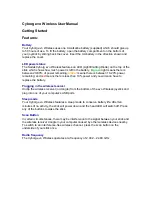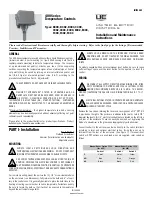
5-6
L90 LINE CURRENT DIFFERENTIAL SYSTEM – INSTRUCTION MANUAL
OVERVIEW
CHAPTER 5: SETTINGS
5
5.2.2 Introduction to AC sources
5.2.2.1 Background
The L90 can be used on systems with breaker-and-a-half or ring bus configurations.
In these applications, each of the two three-phase sets of individual phase currents (one associated with each breaker) can
be used as an input to a breaker failure element. The sum of both breaker phase currents and 3I_0 residual currents can
be required for the circuit relaying and metering functions. Two separate synchrocheck elements can be programmed to
check synchronization between two different buses VT and the line VT. These requirements can be satisfied with a single
L90, equipped with sufficient CT and VT input channels, by selecting proper parameter to measure. A mechanism is
provided to specify the AC parameter (or group of parameters) used as the input to protection/control comparators and
some metering elements. Selection of the measured parameters is partially performed by the design of a measuring
element or protection/control comparator by identifying the measured parameter type (fundamental frequency phasor,
harmonic phasor, symmetrical component, total waveform RMS magnitude, phase-phase or phase-ground voltage, and
so on). The user completes the process by selecting the instrument transformer input channels to use and some
parameters calculated from these channels. The input parameters available include the summation of currents from
multiple input channels. For the summed currents of phase, 3I_0, and ground current, current from CTs with different ratios
are adjusted to a single ratio before summation. A mechanism called a source configures the routing of CT and VT input
channels to measurement sub-systems.
Sources, in the context of L90 relays, refer to the logical grouping of current and voltage signals such that one source
contains all the signals required to measure the load or fault in a particular power apparatus. A given source can contain
all or some of the following signals: three-phase currents, single-phase ground current, three-phase voltages and an
auxiliary voltages from a single-phase VT for checking for synchronism.
To illustrate the concept of Sources, as applied to current inputs only, consider the breaker-and-a-half scheme shown.
Some protection elements, like breaker failure, require individual CT current as an input. Other elements, like distance,
require the sum of both current as an input. The line differential function requires the CT currents to be processed
individually to cope with a possible CT saturation of one CT during an external fault on the upper bus. The current into
protected line is the phasor sum (or difference) of the currents in CT1 and CT2, depending on the current distribution on the
upper bus.
















































